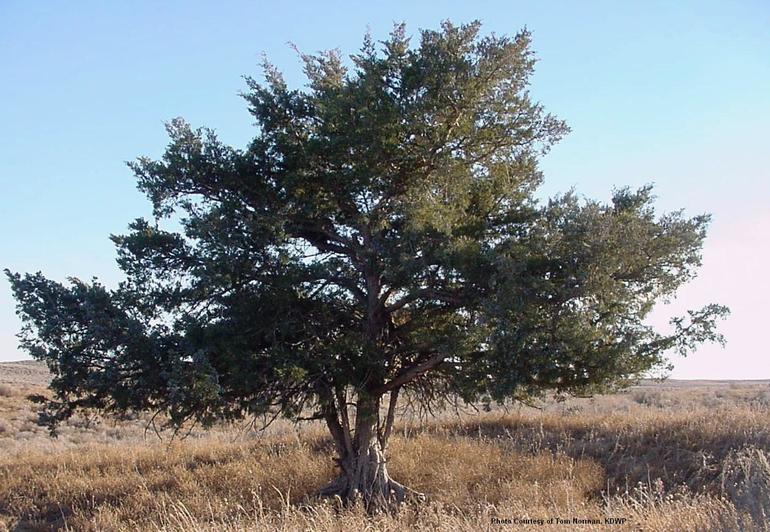In the spring of 1906 the government set aside an area consisting of 165,000 acres as a National Forest Reserve. This was a part of the government's reclamation work in Western Kansas. The land lay south of the Arkansas river in the sand hill area of Finney, Kearny, Hamilton, Grant and Haskell counties, to the Colorado line. This land was set aside for the purpose of experimental tree planting, with the idea of transforming the almost bleak sand hills into a forest which would be a blessing to mankind in the next generation.
Orders were issued by the government in the fall of 1905 to commence work preparing the ground, and the next spring 1,000,000 trees were planted. For several years a like number were planted and the original plans were to continue until the entire tract should be planted. A federal nursery was established in 1908 two miles west of Garden City, where the poor farm is located. Another nursery was established in 1911 on Section 26, Township 24, Range 33 West, which is now within the present State Game Preserve. The reason for the establishment of two nurseries was for the purpose of testing out trees grown on a heavy soil and on a sandy soil. Experimental plantings were tried out for a period of years with pines, spruce, cedars and hardwoods of different age stock. In 1906 the administration of the reserve was under Forest Supervisor C. A. Scott of the Nebraska National Forest Reserve. H. R. Shockley of the same forest was in charge in 1907 and until July 8, 1908. These men were only here at certain periods of the year. On July 8, 1908, the government established an office at Garden City with B. R. H. d'Allemand in charge as forest supervisor. He had two assistants, one in charge of nurseries, and the other had charge of range administration.
Mr. d'Allemand was selected for this reserve because of his experience in both forestry and grazing administration. He was a graduate of the University of Nebraska, having specialized in forestry. He helped with the nursery and planting operations in the Nebraska National Forest Reserve in 1903-4-5. From there he was transferred to the Pike National Forest in Colorado to assist in the nursery and planting operations of that forest. In 1906 he was transferred to the Santa Barbara National Forest Reserve of California, to take charge of the nursery and planting operations of that forest.
A short time after Mr. d'Allemand took charge of this reserve, the whole grazing area was put under the administration of the office in Garden City, and all cattle and horses were grazed under permits issued to the stockmen. Fifty cents was charged per head for the six months grazing period. Twenty-five per cent of the grazing receipts reverted back to the counties in which the government land was located, to be used for road work, and an additional ten per cent was spent through the government also for road improvement in the counties. L. E. Thomas, who lived in this county for many years and was well versed in range problems, was selected as Forest Ranger and had charge of the reserve range from Garden City to the Colorado line.
Under the Act of June, 1906, any land that was tillable within the reserve was restored to entry as it was applied for.
Every other section of land south of the Santa Fe railroad right of way for a distance of ten miles belonged to the various stockmen and ranchers, they having bought it from the railroad. In 1912 the government passed an act which allowed the blocking of their lands which were within the boundary of the Forest Reserve. This was much better for the ranchers and simplified matters of range administration.
The success of tree planting in the Western Kansas sand hill area did not prove very satisfactory. At that time the region was more arid and the evaporation too great and the government decided to abandon the project. In December, 1915, it was all restored to homestead entry, except five sections held as a State Game Preserve.

National Forest Remnant. Image courtesy of Kansas Wildlife Parks & Tourism
In a short time every acre in the forest reserve had been filed on, but in most cases as soon as final proof was made the land was deeded to ranchers and other landowners. When people first began to settle in Finney county the sand hills were barren of all vegetation except soap weeds and some sage brush, the reason no doubt being because of prairie fires which burned over the area. Now it affords excellent grazing. Mr. d'Allemand and Mr. Thomas have found as many as thirty different grasses growing on one section.
In 1915 five sections, or approximately 3,200 acres, were deeded to the state as a "big game preserve," the rest of the reserve having been homesteaded. Its closest point to Garden City is about one mile south of town and from there extends a distance of three miles back into the sand hills. It is the home of nine head of buffalo and a variety of game birds, and is supervised by a deputy game warden.
Editor's Note: The Kansas National Forest Reserve and The Big Game Preserve is now known as the Sandsage Bison Range and is now owned by the State of Kansas.
